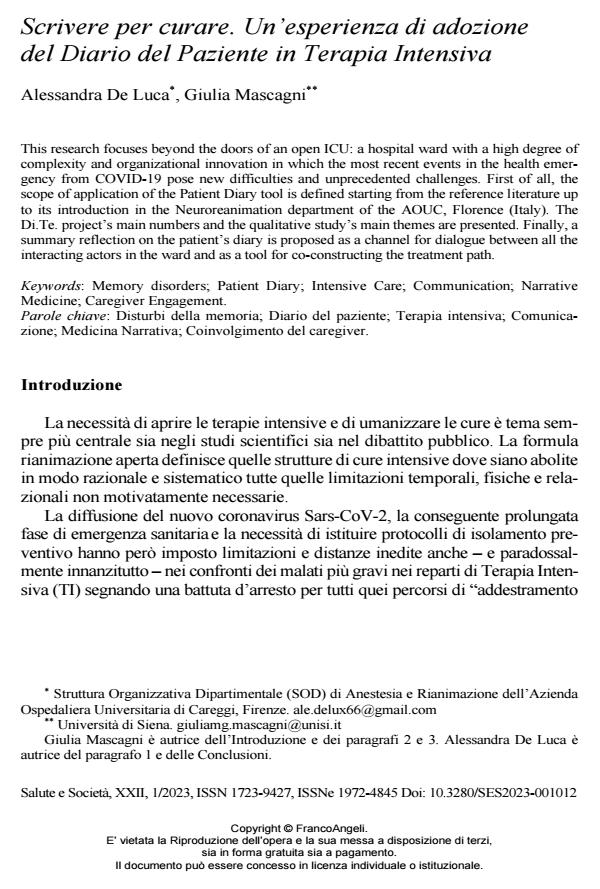Scrivere per curare. Un’esperienza di adozione del Diario del Paziente in Terapia Intensiva
Journal title SALUTE E SOCIETÀ
Author/s Alessandra De Luca, Giulia Mascagni
Publishing Year 2023 Issue 2023/1
Language Italian Pages 15 P. 168-182 File size 244 KB
DOI 10.3280/SES2023-001012
DOI is like a bar code for intellectual property: to have more infomation
click here
Below, you can see the article first page
If you want to buy this article in PDF format, you can do it, following the instructions to buy download credits

FrancoAngeli is member of Publishers International Linking Association, Inc (PILA), a not-for-profit association which run the CrossRef service enabling links to and from online scholarly content.
This research focuses beyond the doors of an open ICU: a hospital ward with a high degree of complexity and organizational innovation in which the most recent events in the health emer-gency from COVID-19 pose new difficulties and unprecedented challenges. First of all, the scope of application of the Patient Diary tool is defined starting from the reference literature up to its introduction in the Neuroreanimation department of the AOUC, Florence (Italy). The Di.Te. project’s main numbers and the qualitative study’s main themes are presented. Finally, a summary reflection on the patient’s diary is proposed as a channel for dialogue between all the interacting actors in the ward and as a tool for co-constructing the treatment path.
Keywords: Memory disorders; Patient Diary; Intensive Care; Communication; Narrative Medicine; Caregiver Engagement.
Alessandra De Luca, Giulia Mascagni, Scrivere per curare. Un’esperienza di adozione del Diario del Paziente in Terapia Intensiva in "SALUTE E SOCIETÀ" 1/2023, pp 168-182, DOI: 10.3280/SES2023-001012